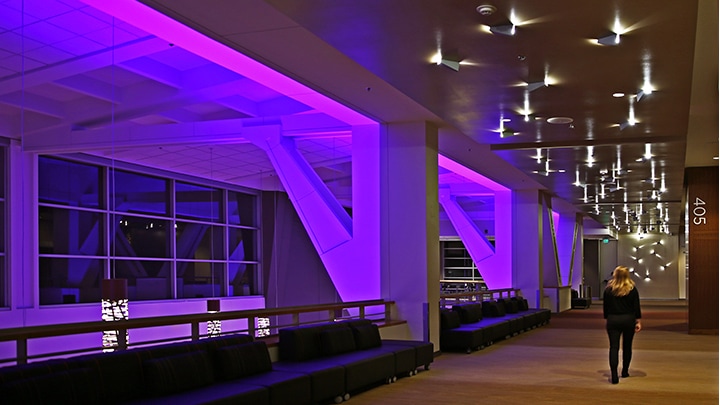
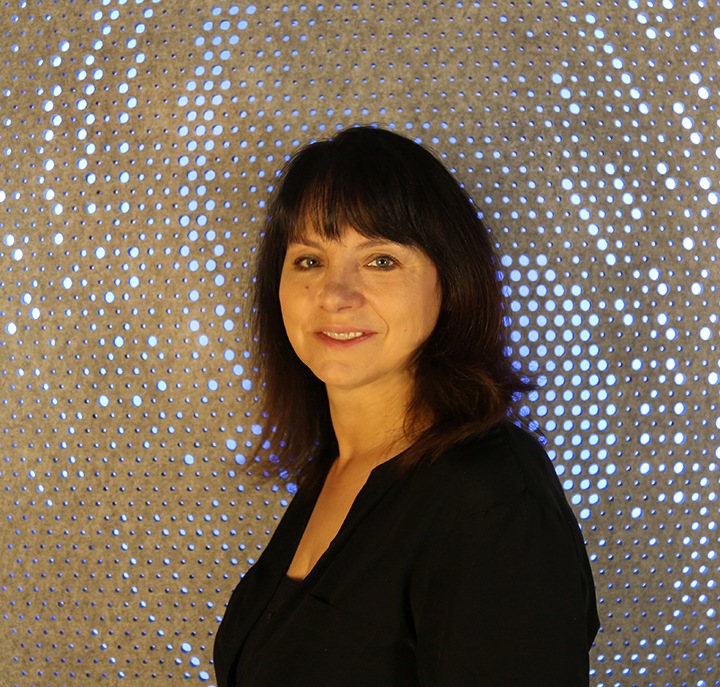
Why did you get into lighting design, and what sparked your decision to create Dark Light Design?
My path started in political science, because even though I always had an interest in design, it didn’t occur to me that one could build a career from it. Later, I went to school for interior design, where I took a lighting class. I loved the idea of being a design specialist instead of a generalist, and lighting design has an appealing balance between creative and technical. In the professional workforce, I was fortunate to gain a broad diversity of experience and understand what goes into a project from a variety of viewpoints. Listening to and learning from architects, engineers, users, owners and contractors are truly invaluable experiences. About ten years ago, Dark Light Design was formed when I was asked to consult on a project, and ramped up the business as it organically grew through client loyalty and word of mouth.
What sets Dark Light Design apart from other lighting design firms?
I’m fortunate to work in a profession with incredible practitioners across the realm, so, it’s not about competition, but instead, being the best designers that we can for each client and project. The success of Dark Light Design revolves around a fantastic team working together. We go into each project with an open mind and understand the client’s goals and acknowledge the project intent. Sometimes it’s not easy for someone to express what they’re looking for from lighting, so we listen carefully, because even the smallest nuggets of information can be revealing. By listening, understanding and engaging with the entire project team, we can reinforce the goals through light, and really elevate a space.
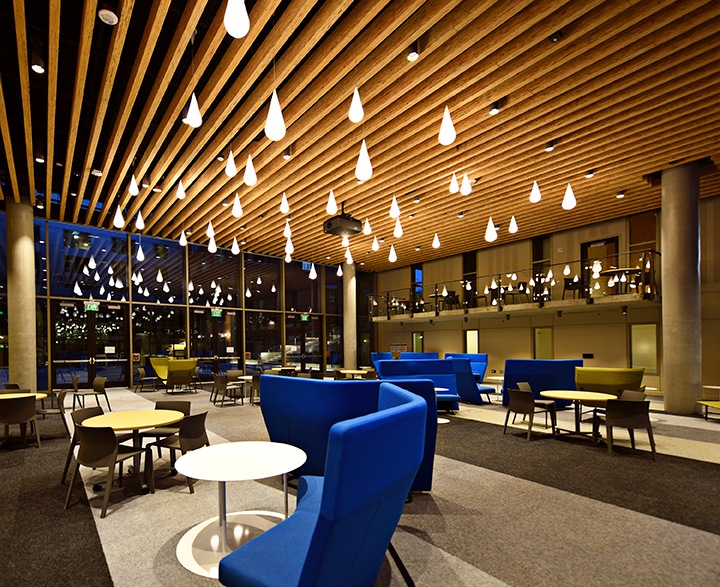
Maple Hall Great Room (Philips Retrofit Lamps in Pendants), University of Washington, Seattle WA – Photo Credit: Jill Cody
How do you achieve balance between opposing forces?
Tension between competing needs and interests always exists, and there are often multiple considerations, so balance is the only option. Every project has a different challenge or design constraint, and that brings about different opportunities. Sometimes, it pushes us, too. For example, we do a lot of work in the public realm, including ferry terminals, streetscapes, and parks. Every public agency has a different light level standard; sometimes they even dictate the fixtures to use. If we understand constraints and challenges up front, we then have guidance for the design, and can weave together solutions to address tensions while crafting a beautiful, interesting end-result.
What role does sustainability play in your work?
For us, sustainability goes beyond power density. Since the most sustainable fixture is the one that isn’t installed in the first place, we start by thinking about what should and should not be lit. We can further drive sustainability by tuning light levels to the function of the space and understanding the aesthetic; especially the balance between uniformity and contrast. Higher contrast spaces can sometimes use fewer fixtures because we don’t need to even out every low spot. Human factors also play into our approach to sustainability, because the most energy-efficient space might result in a dismal user experience, so we have to balance sustainability in the context of an enriching user experience. Also, in the Seattle market, where many of our projects originate, the energy code is very prescriptive and stringent. Basically, if we meet code, we already achieve a certain number of LEED points. This makes for a straightforward controls conversation with the entire project team, but on the other hand, it can create challenges in smaller projects because the power density allowance is so low, and there’s no wiggle room. The market is developing great products like addressable controls to help with additional energy efficiency measures, but the downside is that those writing the codes anticipate these efficiencies and keep pushing for stricter limits. And on the other hand, cost estimators are still catching up to the extent that controls are now a built-in cost of projects in our area. Again, it’s about achieving balance.
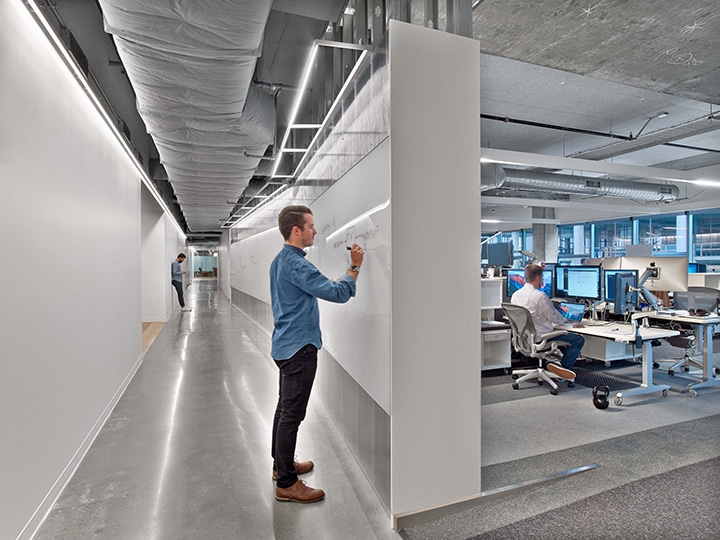
HBO Digital Products, Seattle WA -Photo Credit: Eric Laignel for Rapt Studio
Describe a unique, challenging, or otherwise memorable project.
I’ve been fortunate to work on more than one “once in a lifetime” project, including the Harley-Davidson Museum, the expansion of the historic Pike Place Market, and now the rebuilding of Seattle’s Waterfront. Having the opportunity to influence such an important and visible piece of the city is fulfilling and daunting at the same time. It’s 20 acres that includes an arterial roadway, parks, art installations and more, so creating design cohesion must happen in a variety of scales. It has to be inspiring and durable, and it has to engage locals and visitors alike. So, it’s very much about balancing multiple factors on the lighting side and weaving the lighting together with the urban design. Changes to the waterfront on this scale won’t happen again for generations to come, so just being here at the right time and to participate in something this iconic is amazing. It’s a project that will be experienced by people from all walks of life, which is really rewarding.
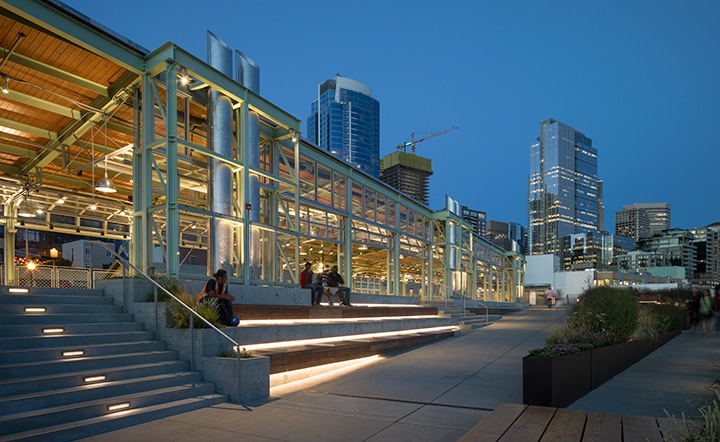
Pike Place MarketFront, Seattle WA – Photo credit Lara Swimmer
What do you wish you knew at the start of your career that you would now impart to emerging professionals?
It’s probably not going to work out according to a pre-set plan, but that’s just fine. I didn’t enter my career aiming to work on streetscapes, ferry terminals and parks. It’s been hard at times, but also rewarding in ways that I couldn’t have anticipated, and I’m really happy to have landed here. What balanced out for me is the opportunity to impact so many people through public works. In the same way that we all evolved into becoming lighting designers, I believe that what we work on, and how we work, finds its way to us. I encourage young designers to be open to the unexpected and explore new avenues, because the opportunities are available. I would also encourage them to develop soft skills, because a successful career isn’t solely based on technical proficiency.
What do you look for in a new lighting designer?
Honestly, it boils down to three things: are they smart, are they motivated, and do they get along with others? In terms of the first criteria, we look for someone that has an understanding of architecture or interior design. We find different gaps among applicants; for instance, we’ve seen architecture students who don’t know Revit or AutoCAD because they weren’t part of the curriculum. Some taught themselves these programs, which brings me to the second criteria of motivation. The faster or easier we can get them into production, the more time we have to explain the rationale behind the fixture spacing or something else. We want someone that proactively asks questions and learns as much as they can from day one. Finally -and this is an important one – they must get along with the people they interface with, both internally and externally. Especially in a small office, they must be willing to work collaboratively, and also possess the mental flexibility to operate from the client’s perspective as opposed to our own internal perspective. Running parallel to those three criteria, we look for emerging professionals with fundamental skills like project management and communication. This isn’t specific to lighting design, any profession requires these soft skills, and they’re often not taught in school. Someone can be the world’s greatest designer, but if they can’t manage the project, or they can’t communicate with others, they just won’t be successful.
Blog header photo: Meydenbauer Center, Bellevue WA-Photo Credit: Jill Cody

November 14, 2023
How lighting technology can help reduce risks to migrating birds